How to clean the living room – 7 simple steps for tackling all chores, from dusting to vacuuming
Our expert-approved, step-by-step guide

Linda Clayton

Knowing how to clean the living room, and clean it well, will ensure your relaxing space stays just as it should be – relaxing. After all, who wants to unwind or entertain amongst dust and dirt?
Here, professional cleaners share their expert advice and cleaning tips for efficiently getting your living room clean, tackling all areas and chores, from dusting to vacuuming, top to bottom.
How to clean a living room
Step 1: Gather your supplies

Begin by gathering everything you need to make the chore simpler.
Getting everything you need gathered together before you start your living room clean not only saves time but also helps get your head in the game for a serious scrubbing session, which is exactly why doing so is one of the things people with clean living rooms always do. The main cleaning supplies required are:
- Two or three clean microfiber cloths, such as the Great Value Multipurpose Microfiber Household Cleaning Cloths available at Walmart.
- Furniture polish or wax. We recommend the bestselling Pledge® Expert Care™ Wood Polish available at Walmart.
- Window cleaner, or vinegar/water solution, and newspaper.
- A feather duster and radiator duster, if available, such as the Swiffer Dusters with Extension Pole available at Walmart, which is ideal for tackling hard-to-reach areas.
- Vacuum cleaner plus upholstery and nozzle attachments.
- Upholstery stain remover and carpet shampoo appliance, if available.
- Mop and bucket for hard floors, if required. We recommend the O-Cedar EasyWring Microfiber Spin Mop available at Amazon, as it allows hands-free wringing with a machine washable mophead.
A small stepladder, such as the HBTower Step Ladder available at Amazon, or a sturdy chair can also help reach the tops of bookcases, molding, and picture rails. Then, once you're ready to get to work, open windows to freshen the room and reduce the dusty air as you clean.
Carolina Kazimierski, president and co-owner of Sophia's Cleaning Service, adds that she also keeps a plastic bin or tub, such as the Mainstays Medium Plastic Storage Bin available at Walmart, on hand for decluttering.
'I like to focus on cleaning first, and will therefore just plop anything I come across that doesn't belong in the living room into a bin to take care of later,' she explains.
All prices were correct at the time of publication.
Design expertise in your inbox – from inspiring decorating ideas and beautiful celebrity homes to practical gardening advice and shopping round-ups.

These microfiber cloths are all-rounders when it comes to cleaning, for dusting and cleaning all kinds of surfaces with a streak-free, lint-free finish.
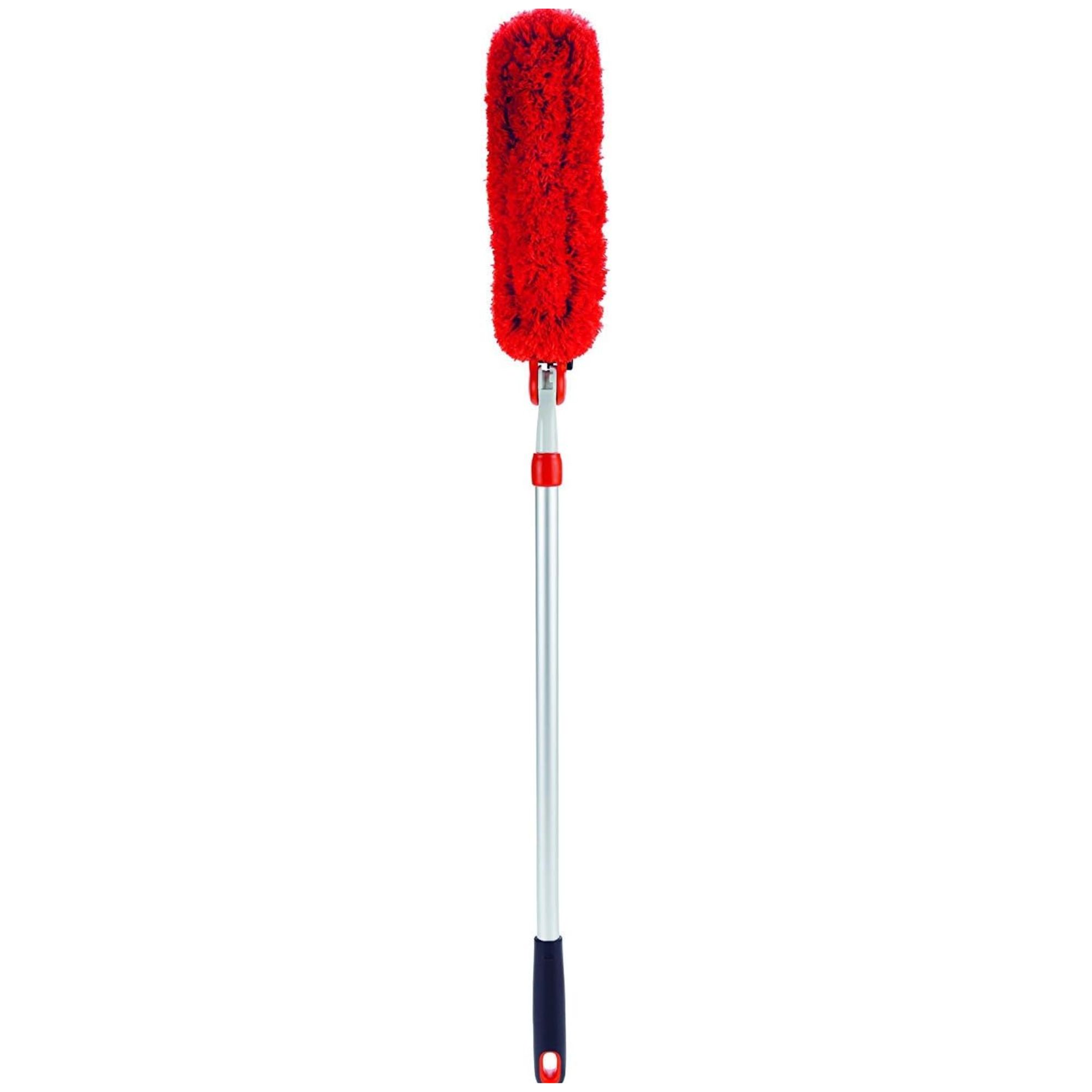
This extendable duster features a soft and comfortable, non-slip grip, and the microfiber head conveniently unsnaps from the handle for easy washing in your machine.
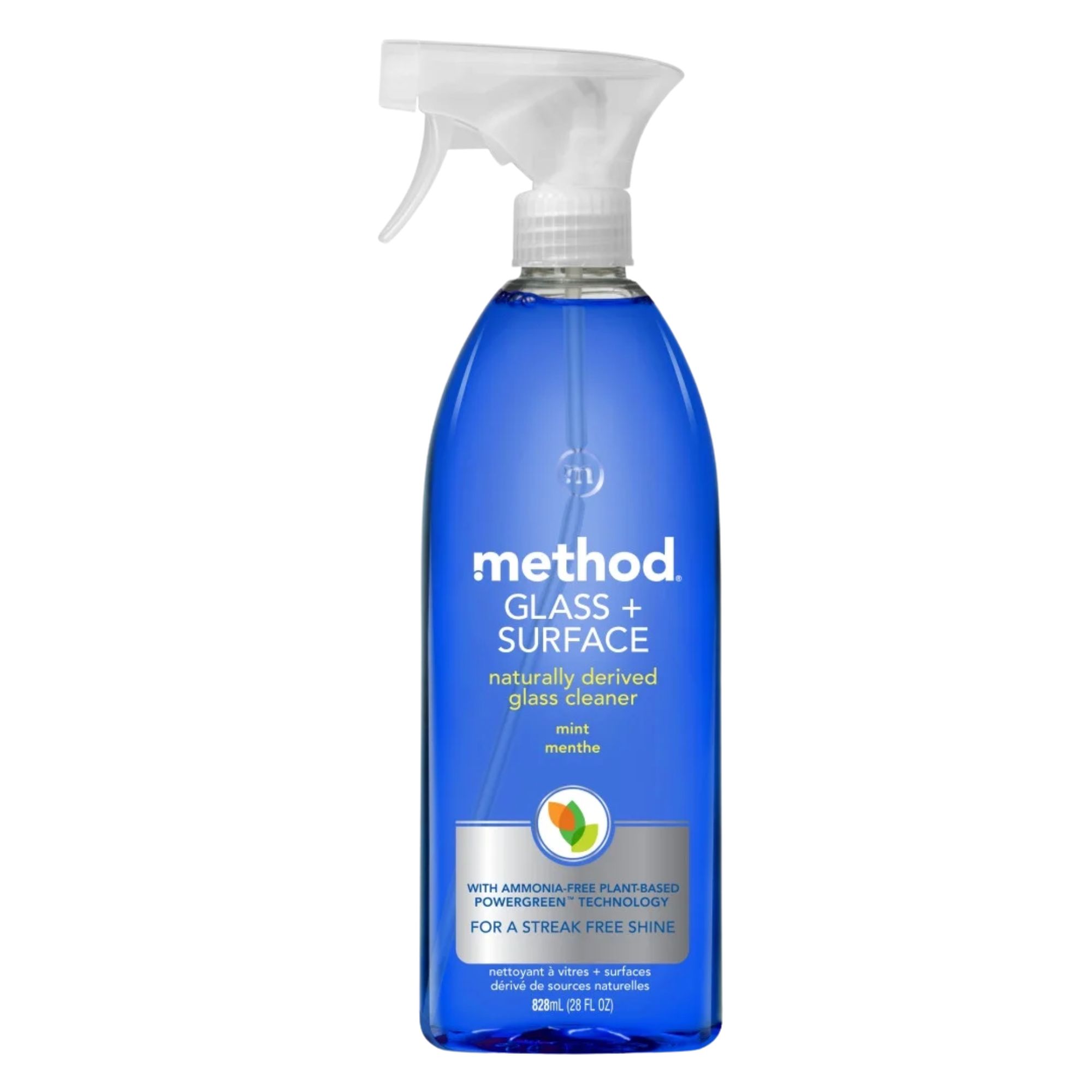
This plant-based glass and surface cleaner eliminates dirt, dust, and handprints for a gleaming shine, and is also suitable for use on tiles and granite.
Step 2: Tidy up before cleaning

Tidying up before your living room clean will make it much easier to get the job done.
It may sound obvious, but cleaning the living room will be much easier to undertake once you've employed some decluttering tips to clear couches and surfaces of all clutter. So, Karina Toner, cleaning expert and operations manager at Spekless, advises, 'Before we start scrubbing, do a quick reset.
'Return all errant objects that shouldn’t be in there to their rightful homes, and straighten up bookshelves and coffee tables to quickly reduce visual clutter in your living room.'
Gather throws and either neatly fold them, or put in your laundry room ideas for washing later. Washing woollen blankets and throws in the machine can be possible, but do check the care label first. Inspect throw pillow covers to see if they can be machine washed, too.

Corral any loose items like blankets or cushions into a gorgeous basket like this, which looks good enough to keep out on display.

Neaten up your coffee table by popping any loose items, like remote controls, onto a statement tray like this, and finish with a vase of dried flowers.

Straighten up your bookshelves with these heavy cement bookends, to turn unruly shelves into an organized library
Step 3: Get dusting

Dust from top to bottom to prevent particles re-settling on areas you've already tackled.
Next, it's time to remove dust. Dry dusting with a soft cloth or feather duster is perfect for hard-to-reach areas like cornices, picture rails, curtain rods and high shelves when cleaning a living room. You can also buy special dusters for getting behind and around radiators. We recommend the DELUX Microfiber Feather Duster available at Amazon for this, which includes seven detachable heads.
Always dust your living room from the top down to avoid sullying surfaces you’ve already done. Will Cotter, cleaning expert and founder of DeluxeMaid, says, 'If you've got ceiling fans, that's the first thing you should clean in your living room. If you skip them, you’ll just end up with dust floating down onto your freshly cleaned stuff.
'Safely climb up a ladder, get a pillowcase, slip over each blade, and gently pull it back. If that’s not an option, you can get a duster cleaner with a telescopic handle. I tried the Blade Maid Ceiling Fan Blade Cleaner & Flexible Dusting Brush available at Amazon with the cleaning sleeve, but getting it onto the fan blade was a bit of a struggle. But, with the Ceiling Fan Blade Duster Cleaner, also available at Amazon, I just have to adjust the bendy head, spritz it with a dusting spray, and clean!'
Don't forget about your light fixtures, either, advises Will, which are likely overlooked spots you're forgetting to dust among the hidden areas of the living room we forget to clean.
'You can use a dry, soft cloth, a microfiber duster, or even a feather duster,' he says.
'A lint roller, [such as the Scotch-Brite Lint Roller Twin Pack available at Walmart], also works for fabric lampshades. But, if you want to take things a step further and really keep that dust away, try using a dryer sheet.
'Just rub a dryer sheet over your lampshade and it'll help repel dust and static cling. For floor lamps, dust the entire lamp, including the pole and base.' You can do the same for dusting books.
Next switch to a damp microfiber cloth, which will remove more dust and is better on hard surfaces like baseboards, picture frames, doorframes, and coffee tables.
Be particularly careful when cleaning a television screen. Use a fresh microfiber cloth and gently wipe the screen in an up and down motion, not circular. If there are some stubborn marks, very lightly moisten the cloth and go over again. Never spray water or cleaning products directly on to the screen.
Some wood furniture, particularly antiques, will benefit from furniture polish or wax, which is designed to feed the timber and protect against moisture. Read the instructions on the can or tin carefully, and get advice from a furniture maker or restorer if you’re unsure. Always do a spot test somewhere discreet if you are using a new product for the first time.

This staple non-toxic cleaning supply needs only water to offer an effective clean, effortlessly trapping dust and debris, ideal for cleaning your home without harming the planet.
Step 4: Clean the windows and mirrors
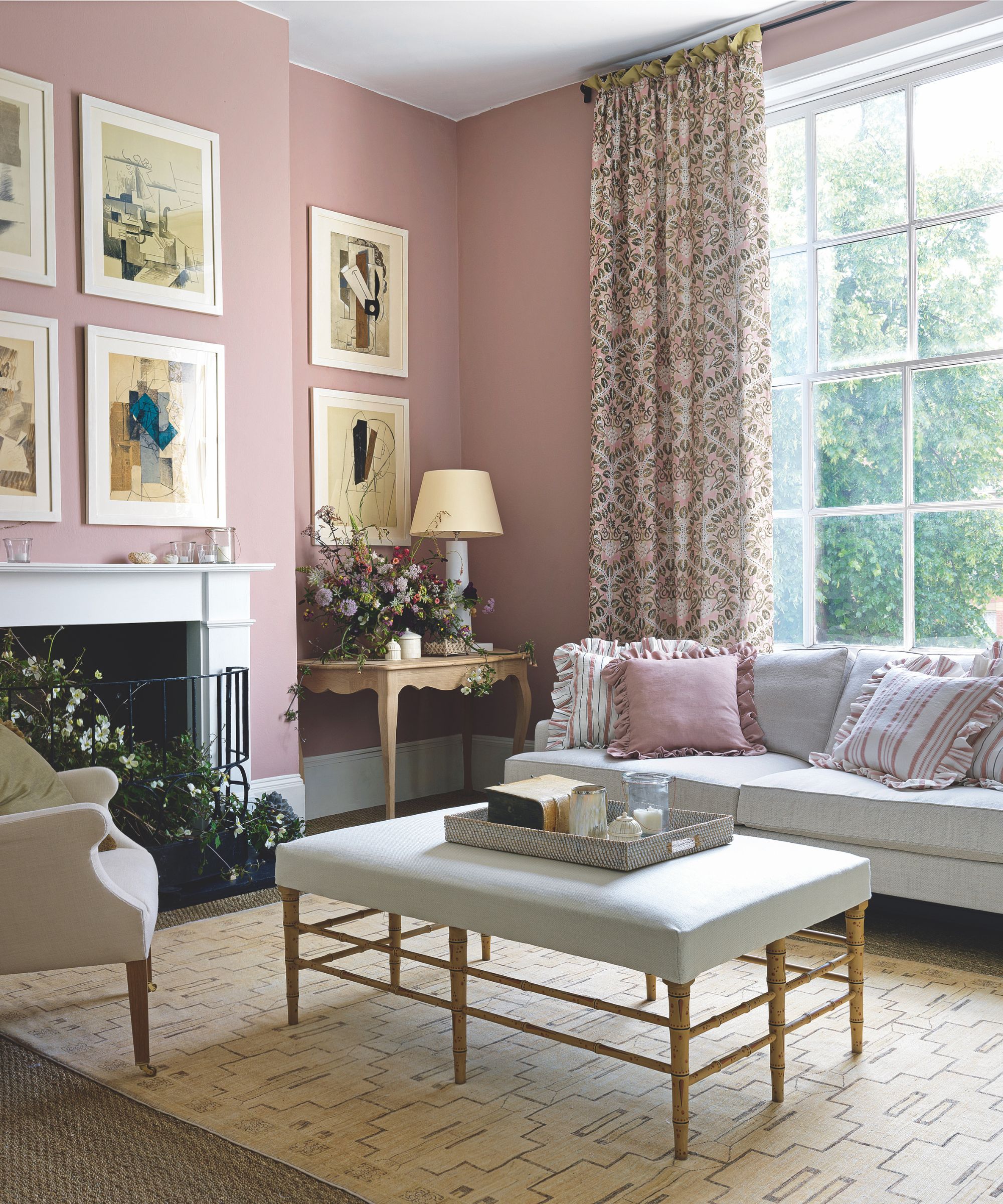
Cleaning your windows will let natural light fill your space.
Buffing up your windows and mirrors to a high shine is an important part of keeping your living room clean. You can use a general glass cleaning spray, but we prefer to clean with vinegar, as it is both natural and inexpensive.
To clean windows or to clean a mirror without streaks, simply mix equal parts of white vinegar and hot water in a spray bottle, such as the Equate Plastic Spraybottle available at Walmart, and add a splash of liquid soap to help remove any streaks. Spritz the glass lightly all over, taking care not to overdo it.
Then, taking notes from our nostalgic cleaning tips, grab a sheet or two of old newspaper, scrunch it up and rub the glass in circular motions until it’s clean and streak free.
Don’t forget to include the glass in your wood stove, if applicable (leave-on foam oven cleaner is particularly effective for removing burned-on grime), as well as glass picture frames, glass lampshades, and any vases or coasters made from glass.
Step 5: Tackle window treatments

Don't forget about your window treatments when striving to keep your living room clean, which accumulate more dust and debris than you may realize.
As window care expert Rachel Fernie of Hillarys says, ‘You open and close your curtains and blinds every day, so you may be surprised by how much dust has gathered. Handheld vacuums are a good way to clean curtains, rods, and pelmets without having to take them down.' Any major stains or marks may require a trip to the dry cleaners, although you can wash and care for curtains and drapes at home. Just make sure you're aware of how often you should wash curtains, as they're likely one of the things you aren't washing enough.
Cleaning expert Carolina shares, 'I personally prefer to buy machine-washable curtains so I can simply take them all down and throw them in the wash while I clean since I find it easier than trying to vacuum or otherwise dust.'
Clean blinds according to type. A vacuum cleaner can be used first on some, followed by a microfiber cloth. If they are shutters or horizontal blinds, close them first in one direction and clean from left to right; then twist or pull the cord to close them in the opposite direction and repeat. You may need to shake out the cloth several times as you go.
Step 6: Vacuum couches, armchairs and other seating
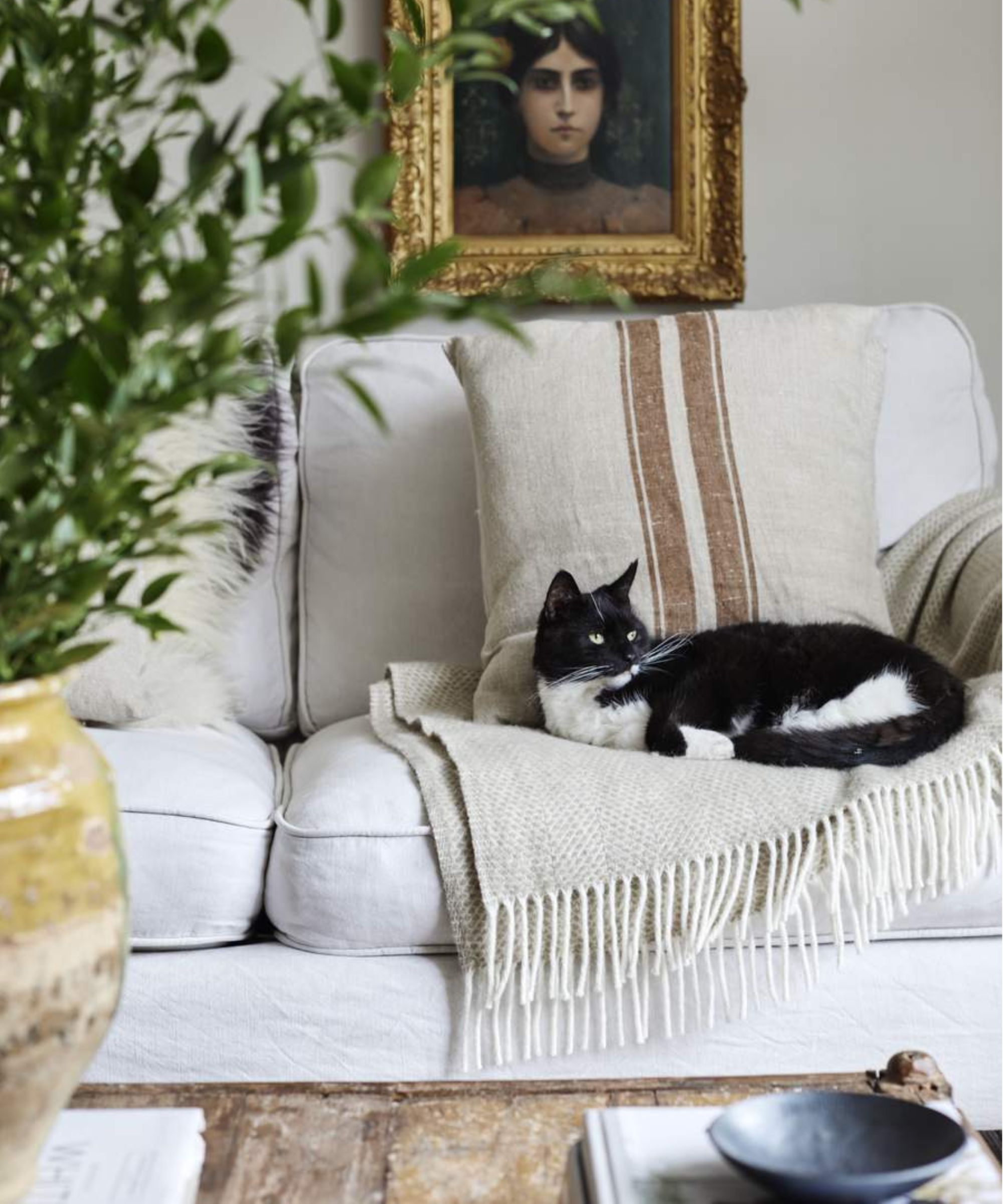
Make sure you take the time to vacuum all your soft furnishings, particularly if you have pets at home, which can make keeping a living room clean all the more important.
Next, clean couches and chairs by taking off all the seat cushions and removing any large items, like pencils and spare change. Attach the nozzle to your best handheld vacuum and get right into the corners and crevices before switching to the upholstery attachment to clean upholstery of the main seat area, backs, and arms of your couch.
If the covers are removable and appear grubby, it may be time to give them a clean; follow the laundry symbols on the label inside and wash with a gentle detergent, such as the Tide Free & Gentle Laundry Detergent Liquid available at Walmart. Karina says, 'If you spot any stains, spray lightly with upholstery cleaner and blot.' We recommend the Bissell® Woolite® Advantage Carpet & Upholstery Cleaner available at Amazon for this.
Put the seat cushions back on the couch and give them a vacuum, too. Any light marks and dirt can often be wiped off with a damp cloth but take care not to scrub too hard, especially if your upholstery is linen or velvet, which can mark if rubbed excessively in one spot. Clean a leather sofa with care, too.
Upholstered ottomans, where the fabric is very taut, can often be cleaned with a carpet shampoo-type vacuum on a low setting. You can also get compact handheld versions for upholstery, which are also great for tackling area rugs.
Optionally, Karina adds, freshen up your fabrics with a fabric spray, such as the Febreze Fabric Spray Air Freshener available at Walmart, or a sprinkle of baking soda. 'Let sit for a few minutes, then vacuum,' she directs.

While you don't have to use a upholstery cleaner like this, they can be a worthy investment, particularly for keeping a clean home when you have pets. This one features powerful suction and a large tank capacity.
Step 7: Clean the floors
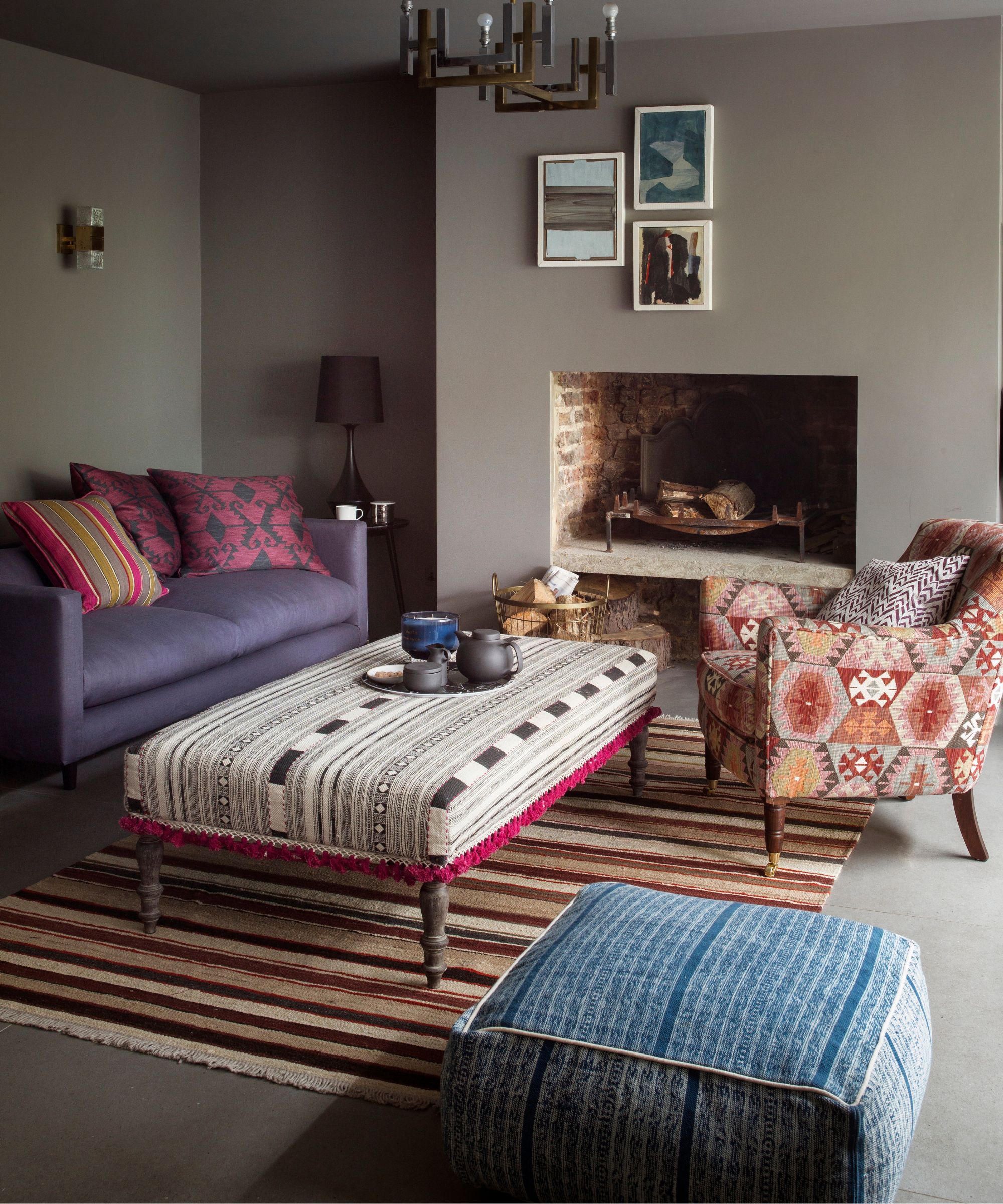
Finally, complete your cleaning checklist by vacuuming or mopping your floors.
Now, you’re nearly on the home straight. As Karina says, 'Almost there! Time to wrap it up with clean floors.'
The floor should always be the last chore on your list, especially if you’re planning to shampoo rugs and/or carpets. Caroline explains, 'I tend to save vacuuming carpet and area rugs, or sweeping tile, for very last, since you'll likely have some dust and debris settled on your floors by the end of your clean sweep.'
Move any furniture you can, or use the attachments to reach as far as you can underneath and behind. If you have cats or dogs and your existing vacuum isn’t up to scratch, it’s worth swapping to one of the best vacuums for pet hair. The Dyson V15 Detect Cordless Vacuum Cleaner available at Amazon is our top pick, as chosen by our in-house experts.
Will suggests, 'For carpets, freshen them up after cleaning with baking soda. Sprinkle liberally over the surface, let it sit for 20 minutes, then vacuum it up.'
Clean area rugs by taking them outside, if manageable, and beating out the dust, then give the floor below a good clean while the rugs are out of the room. If the carpet needs cleaning, put your carpet shampoo machine into action. You can also hire them from local hardware stores, or get a specialist in.
Clean hardwood floors, or those made from stone or laminate, by vacuuming before wiping over with a well-wrung mop. Always allow your living room floor time to dry thoroughly before replacing any rugs or letting children and pets back into the room.
Meet our experts

Karina is an expert when it comes to both commercial and residential cleaning, as well as both indoor and outdoor cleaning chores, with numerous contributions in Homes & Gardens, Real Homes, The Spruce, and many more.

DeluxeMaid is proudly featured on Apartment Therapy, Forbes, Reader's Digest, and more, and is both a top rated in the state and Google guaranteed business.

Sophia's Cleaning Service was founded in 1984, since becoming one of Chicago's longest-standing and best reviewed cleaning companies.
FAQs
Why is it important to clean your living room?
A survey from homewares brand Brabantia found that 76 percent of people believe a clean home has a direct impact on their mental health and happiness. Clutter and mess, on the other hand, were linked to stress, lower mood, tension within the household, and even reduced productivity.
Beyond aesthetics, there’s science behind the satisfaction of a freshly cleaned space. Cleaning can create a sense of purpose, accomplishment, and even act as a mindful practice – something that brings focus and calm in the same way a meditation or quiet ritual might.
And the benefits aren’t just emotional. A well-maintained living room is also better for physical wellbeing. Regular cleaning helps reduce dust and pollen – common triggers for allergies – while also minimising pests such as clothes moths and carpet beetles.
In short, a clean home doesn’t only look good – it feels good, supports wellbeing, and creates a space you genuinely want to spend time in.
How can I keep my living room neat and clean?
The key to keeping any room in your house neat and clean is to adopt a ‘little and often’ approach, and the living room is no exception. Try to train every member of your household to look behind them as they leave the room and check if there are any plates, mugs, shoes, or books they could take with them, taking inspiration from the 'Take Away 10' method. By always ensuring that the space is tidy, it will be easier to clean – this is essential if you want to make your living room beautiful.
Wiping away any spills as soon as they occur will help immensely, especially when it comes to removing coffee stains and removing red wine stains. Soaking out as much as you can using a kitchen towel or similar before applying stain remover and then a final wash with a damp cloth is your best chance of completely eradicating stains.
You should aim to give your living room a decent clean – dust and vacuum – at least once a week, and a more thorough clean, as described in our steps above, perhaps every six to eight weeks, according to use.
Have a fireplace? You’ll need to clean a fireplace of dust and grime from time to time. Make sure to clean walls of marks and scuffs every so often, too.

Ottilie joined Homes & Gardens in 2024 as the News Writer on Solved, after finishing a Master's in Magazine Journalism at City, University of London. Now, as the Sleep Editor, she spends her days hunting deals and producing content on all things sleep – from mattresses and sheets to protectors and pillows, all of which she tests in her own home. She also has particular expertise in home fragrance, covering everything from candles to reed diffusers.
Previously, she has written for Livingetc and Motorsport Magazine, and also has a Master's degree in English Literature and History of Art from the University of Edinburgh, where she developed a love for inspiring interiors and architecture.
